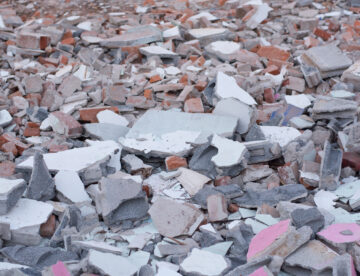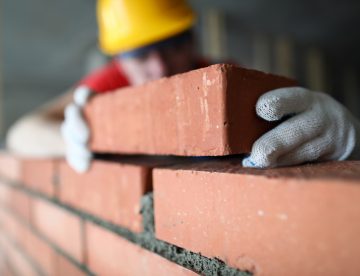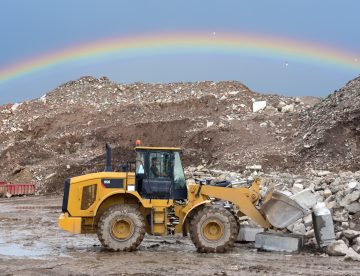
The John Lewis advert has hit the screens, supermarket shelves are starting to fill up with Christmas goodies and probably somewhere there’s a radio station already adding Mariah Carey into their playlist.
While the festive season brings joy to many, there is a darker side which sees some people falling into debt as they join in with the ‘spend, spend, spend’ ethos that will be pushed at us over weeks ahead. Businesses are not immune to this either and can, in fact, stumble into overspending habits at any time of the year. With this in mind, our blog this week focuses on some simple ideas for avoiding overspending.

In a single year, the UK generates 67.8 million tonnes of non-hazardous Construction and Demolition waste, a figure that represents 62% of the nation’s total waste output.
This waste is made up of all kinds of products – concrete bricks, tiles, ceramics, insulation, wood, glass, plastic, bituminous mixtures, cement, gypsum, paints, varnishes, soil, stones, coal, tar, cables, pipes, adhesives and sealants – to name a few!
While much of this is recovered, taking action to reduce construction waste has proven to be good, not only for the environment, but also for business. Keep reading to find out more…

This week, the Egyptian city of Sharm el-Sheikh saw world leaders, business leaders, climate activists, civil society representatives and others arrive for COP27 – the largest annual gathering on climate action. Running for two weeks (until 18th November), this United Nations conference is seeking renewed solidarity between countries to urgently tackle the global climate emergency and deliver on the Paris Agreement for people and the planet.
Approaches that can be made by energy intensive sectors such as oil, gas, steel and cement will be discussed on the conference’s ‘Decarbonisation Day’ (11th November) so we’ll be keeping a watch on what’s said. Meanwhile, we thought we’d take this as our theme for this week’s blog and look at five ways construction companies can lower their carbon footprint.

Across the world, it’s estimated that around 1.5 billion vehicle tyres are discarded every year. Most of us have probably never really thought about this or what might be happening to such a mountain of tyres once they’ve been cast off. While some may get strung up to a tree to make a swing, such repurposing is really an exception to the rule. In fact, less than one percent of old vehicle tyres are ever reused, meaning huge quantities wind up in stockpiles and landfill.
Now, researchers from the University of South Australia (UniSA) have come up with something that could not only help to resolve the landfill problem but also provide an economically viable and sustainable alternative to concrete for the construction industry. Read this week’s blog for more about this exciting development.

The humble brick: we work with it every day and probably never really think of it as anything more than a key component of the structures we build.
However, for some people, the brick is just the starting point of an innovative project or an artistic endeavour! So, just for fun, in this week’s blog we’re bringing you two short stories that might make you see bricks in a new light.

Like most construction companies, there are times when our work involves dealing with and temporarily storing hazardous waste on site. If we were to do this poorly, it would have the potential to cause damage to both the environment and the local community (especially if it was allowed to contaminate surface water or groundwater supplies).
The good news is that we take our responsibilities seriously and follow strict procedures that comply with UK legislation and ensure no such damage comes about. As this is such an important topic, we’ve put together this quick guide to hazardous waste so that people know exactly what they should/ shouldn’t be doing.

Globally, in every town and every city, concrete is used to give our buildings shape and strength. But the huge scale of the concrete industry comes at a cost – it’s estimated that around 7% of the world’s carbon dioxide emissions come from the manufacture and use of cement, which is the main component of concrete.
Now, a team from the University of Tokyo have come up with a new kind of concrete that has the potential to reduce emissions from the construction industry! Read on to find out more about this concrete of the future.

Second only to packaging in generating an estimated 50,000 tonnes of plastic waste each year, it’s clear that plastic is still a big problem for the UK’s construction sector. Of course, it’s the very thing that makes plastic desirable (it’s durability) which is what also causes the biggest issues. With so much plastic waste ending…

Over a third of all major injuries reported each year are caused by a slip or trip at work. In the construction industry, that means several thousand workers suffer injuries every year, around a thousand of which involve fractured bones or dislocated joints. While some injuries are minor, those which are more serious can result…
